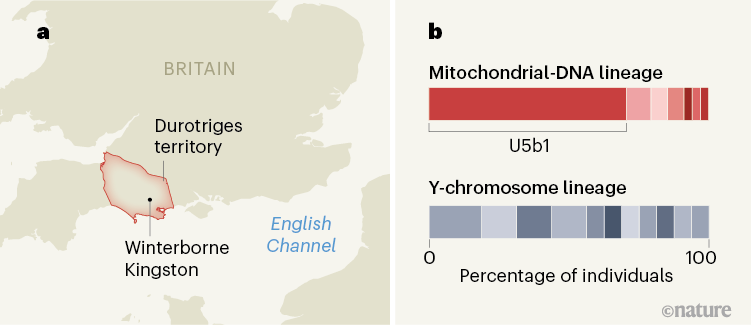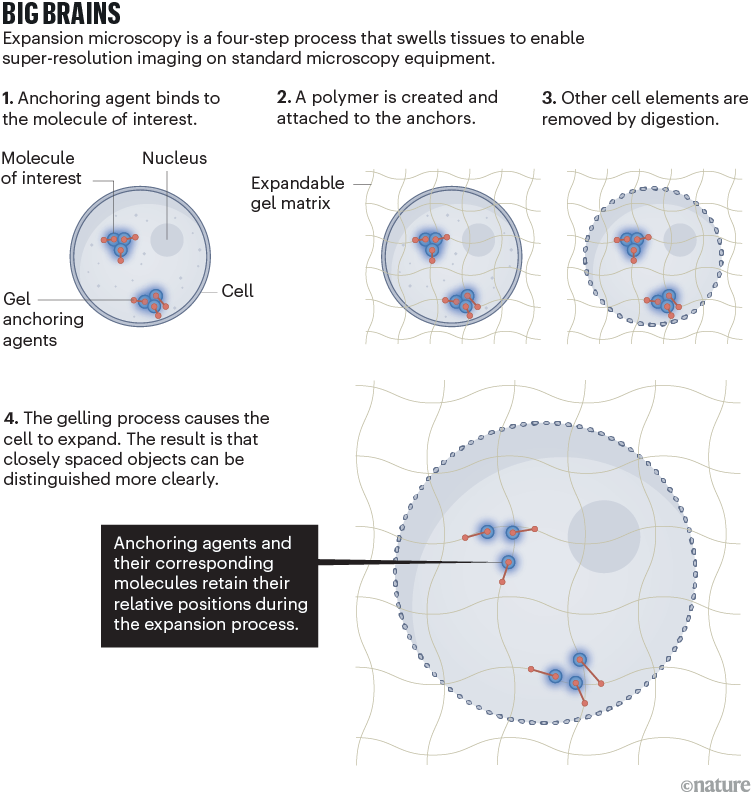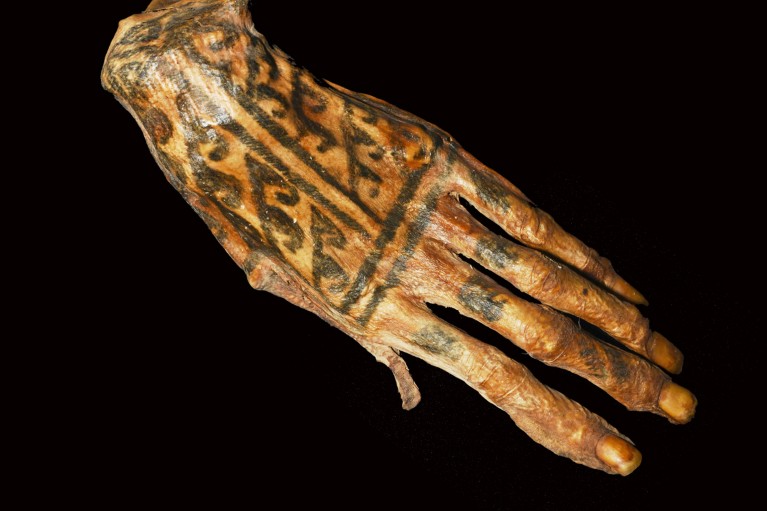Hello Nature readers, would you like to get this Briefing in your inbox free every day? Sign up here.
Snake venom can cause paralysis, tissue damage and death.Credit: Ingo Schulz/imageBROKER via Getty
Researchers have used artificial intelligence (AI) to develop proteins that can block the deadly effects of snake venom. They used a protein-design program called RFdiffusion to design ‘mini-binder’ proteins that attach to key regions of venom toxins to neutralize them. Mice injected with what would be a lethal dose of the venom all survived when given these mini-binders 15 minutes later. “This is probably the coolest experimental result I’ve had in my career so far,” says biochemist Susana Vázquez Torres.
Russia’s invasion of Ukraine in 2022 has bolstered European efforts to increase university involvement in military research. The German government is pushing institutions to overturn policies that restrict research to peaceful purposes. And the European Commission is proposing ways to boost dual-use research with both civilian and military applications. But these attempts are also receiving pushback, including from many academics.
The tech giant Meta, which runs Facebook, WhatsApp and Instagram, has unveiled a machine-learning system that can translate speech in 101 languages into words spoken by a voice synthesizer in any of 36 target languages. Trained on around half-a-million hours of audio matched with the corresponding text, the system translates speech to speech in only a few seconds without the need to translate it into text first. Meta researchers say they fine-tuned the system to limit the occurrence of gender bias and ‘added toxicity’, cases where a translation includes offensive terms that don’t reflect the original language.
Celtic communities in Britain were ‘matriolocal’ — women stayed with their families and their husbands came to them — according to genetic analysis. Investigations of 55 individuals found in an Iron Age burial site in the south of England associated with the Durotriges tribe showed that two-thirds of them shared mitochondrial DNA. This form of DNA is passed only through mothers — a sign that they all descended from the same female ancestor. Matriolocality doesn’t necessarily equate to women’s empowerment, but the findings could explain why archaeologists often find Celtic women buried with goods such as jewellery and combs, while men weren’t afforded the same luxuries for the afterlife.

Figure 1 | Women anchored Celtic communities. a, Cassidy et al. analysed DNA from 55 individuals buried at Winterborne Kingston, an Iron Age burial site dating from 100 bc to ad 100. The site is associated with the Durotriges, a Celtic tribe from southern Britain. The authors found compelling evidence of matrilocality, a social practice in which a woman remains in her ancestral community after marriage. b, The authors traced maternal and paternal ancestry by analysing portions of DNA inherited from only the mother (DNA found in organelles called mitochondria) and from only the father (DNA on the Y chromosome). Strikingly, most related individuals at Winterborne Kingston descended from a single maternal lineage, termed U5b1. By contrast, Y-chromosome diversity was high, indicating that men travelled from other communities while women stayed local. The authors saw a similar pattern in Iron Age sites across Britain (adapted from Fig. 1 of Cassidy, L. M. et al. Nature https://doi.org/10.1038/s41586-024-08409-6; 2025).
Researchers used DNA from remains found at a burial site in Winterborne Kingston in southern Britain (a). They traced maternal and paternal ancestry by analysing portions of DNA inherited from only the mother (DNA found in organelles called mitochondria) and from only the father (DNA on the Y chromosome) (b). Most related individuals at Winterborne Kingston descended from a single maternal lineage, termed U5b1, but the diversity of Y-chromosome DNA indicated that men descended from several other communities. (Nature News & Views | 8 min read, Nature paywall)
Features & opinion
As Donald Trump prepares to take office for his second term as president of the United States, Nature explores which areas of science and research are likely to win or lose under his administration.
• Sectors seen as ‘industries of the future’ or key to the US–China rivalry — such as AI, quantum information science, tech manufacturing, communications and biotechnology — are expected to get strong support.
• Space exploration is another likely winner, as space billionaires such as Elon Musk, Trump’s advisor and financial supporter, advocate for human space flight.
• For the climate and environment, scientists are bracing for the worst. Trump is expected to pull the United States out of the 2015 Paris climate agreement for a second time and slash pollution regulations that he says hurt the economy. Plans to downsize the government are likely to hit the Environmental Protection Agency particularly hard. But Trump administration plans to scale back investment in the green economy could falter, because money is already flowing to Republican-led states.
• Many researchers are concerned over potential changes in public-health policy, personified by Trump’s nominee for head of the country’s sprawling healthcare and research department, Robert F. Kennedy Jr. Critics say he has no relevant qualifications, has promoted misinformation about vaccines and shows little interest in battling infectious diseases. On the plus side, researchers hope that opportunities might stem from Kennedy’s focus on chronic diseases and the health risks of ultra-processed foods and some hope for beneficial reforms to the National Institutes of Health.
After the Second World War, US general Douglas MacArthur sent retrofitted Japanese military vessels to Antarctica to hunt whales, with the aim of finding cheap meat for Japan and oil for the West. The whalers killed more than 2,300 blue (Balaenoptera musculus) and fin (Balaenoptera physalus) whales, saving samples of their baleen for scientists. After more than 60 years languishing in the Smithsonian collection, the baleen has been painstakingly documented by researchers to reveal how whales had adapted to a wartime lapse in hunting. By analysing the residue of hormones in the baleen, scientists were able to pinpoint a spike in stress that occurred at the same time whaling resumed. The finding could help us to understand how whales are responding to the modern-day explosion of human activity in their environment.
It “was kind of magical”, says genomicist Fei Chen, recalling the first time he saw expansion microscopy (ExM) in action. The technique, which involves swelling cells and tissues 100-fold by attaching them to a slowly-expanding chemical scaffold, has offered researchers an unprecedented window into nanoscale biological systems. Ten years on, ExM is still unlocking insights. Researchers are turning their attention to its untapped potential in diagnosing diseases from Parkinson’s to nephrotic syndrome. “Expansion microscopy could do so much more that people don’t even know yet,” says biophysicist Xiaoyu Shi.
Reference: Science paper (from 2015)

Source: A.T. Wassie et al. Nature Methods 16, 33–41 (2019)
Image of the week

Intricate inked patterns cover the hand of a person from the Chancay culture of Peru. Credit: Michael Pittman/Thomas G. Kaye
Laser imaging has helped to reveal the fine details of tattoos on the 1,200-year-old mummified remains of individuals from the pre-Columbian Chancay culture, who lived in what is now Peru. An imaging technique called laser-stimulated fluorescence makes the skin under the tattoo appear white, yielding a high-contrast image. It allowed the researchers to see lines as narrow as one-tenth of a millimetre on the mummies’ skins, revealing intricate geometric, plant and animal designs. (The New York Times | 5 min read)
Reference: PNAS paper or read the 3-minute summary in the Nature Research Highlight (paywall)
Today I’m getting dizzy watching a dragonfly quadruple somersault. The critter was caught on camera dunking itself in water then elegantly flipping to dry off, a stunt it performed every 10 minutes or so. The routine quickly cools them down, researchers found, which lets them guard their territory while staying sun safe.
While I get my balance back, let us know how we can keep this newsletter on an even keel at [email protected].
Thanks for reading,
Jacob Smith, associate editor, Nature Briefing
With contributions by Flora Graham and Smriti Mallapaty
Want more? Sign up to our other free Nature Briefing newsletters:
• Nature Briefing: Careers — insights, advice and award-winning journalism to help you optimize your working life
• Nature Briefing: Microbiology — the most abundant living entities on our planet — microorganisms — and the role they play in health, the environment and food systems
• Nature Briefing: Anthropocene — climate change, biodiversity, sustainability and geoengineering
• Nature Briefing: AI & Robotics — 100% written by humans, of course
• Nature Briefing: Cancer — a weekly newsletter written with cancer researchers in mind
• Nature Briefing: Translational Research — covers biotechnology, drug discovery and pharma


